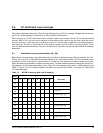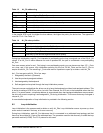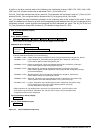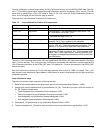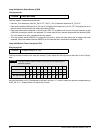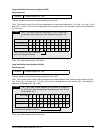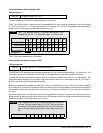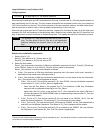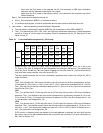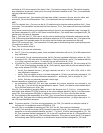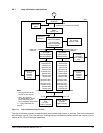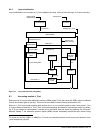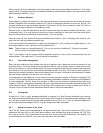
Fibre Channel Interface Manual, Rev. D 41
Loop Initialization Loop Position (LILP)
132-byte payload
When the loop master gets the LIRP frame back from the loop, it contains the AL_PAs and physical location of
each participating port on the loop. The loop master retransmits the completed position map (now called the
LILP) to the next port on the loop. This informs all ports of the loop’s physical make-up and also makes it pos-
sible for each port to make a copy of the map before retransmitting it to the next port.
When the loop master gets the LILP back from the loop, it sends a CLS followed by Idles. All of the other ports
retransmit the CLS and transition to the Monitoring state. When the loop master gets the CLS back from the
loop, it removes it and then transitions to the Monitoring state. This signals the end of the initialization process.
Detailed loop initialization explanation
1. Select initial AL_PA
Each FL_Port selects an AL_PA hex value of ‘00’.
Each NL_Port selects an AL_PA hex value of ‘EF’.
2. Select the loop master
Each L_Port continuously
1
transmits a LISM loop initialization sequence with the D_ID and S_ID fields set
to hex ‘0000xx’ (where ‘xx’ is its initial AL_PA) and its Port_Name in the payload.
Each L_Port monitors its receiver and proceeds as follows:
a. If the L_Port receives a LISM loop initialization sequence that is the same as the one it transmits, it
becomes the loop master and continues at step 3.
b. If the L_Port received a LISM loop initialization sequence that is not the same as the one it transmits,
the L_Ports checks the D_ID and payload as follows:
i. If the L_Port is an FL_Port and the received D_ID = hex ‘000000’, the loop initialization sequence
is from another FL_Port. If its Port_Name is algebraically:
- lower than the Port_Name in the payload, the FL_Port transmits a LISM loop initialization
sequence with the payload containing its own Port_Name.
- higher than the Port_name in the payload, the FL_Port retransmits the same LISM that it
received and goes to the MONITORING state in nonparticipating mode (another FL_Port won
the role of loop master).
ii. If the L_Port is an FL_Port and the received D_ID is not equal to hex ‘000000’, the FL_Port dis-
cards the received sequence. This allows an FL_Port to become the loop master.
iii. If the L_Port is a NL_Port and the received D_ID equals hex ‘000000’, the NL_Port retransmits the
received Loop Initialization Sequence. This allows an FL_Port to become the loop master.
iv. If the L_Port is an NL_Port and the received D_ID is not equal to hex ‘000000’, the Loop Initializa-
tion Sequence is from another NL_Port. If its Port_Name is algebraically:
1
Frames are sent continuously because they may be discarded by any L_Port that does not have a receive buffer available
(flow control is not used during initialization).
11070000 128-byte map of AL_PA physical positions
Byte map content
06 E8 D6 E2 6A 5F 08 FF ... FF
Example
This example LILP map shows that there are 6 ports on the
loop. The hex values of the AL_PAs are in the appropriate
positions indicating the physical order of the ports on the
loop.



